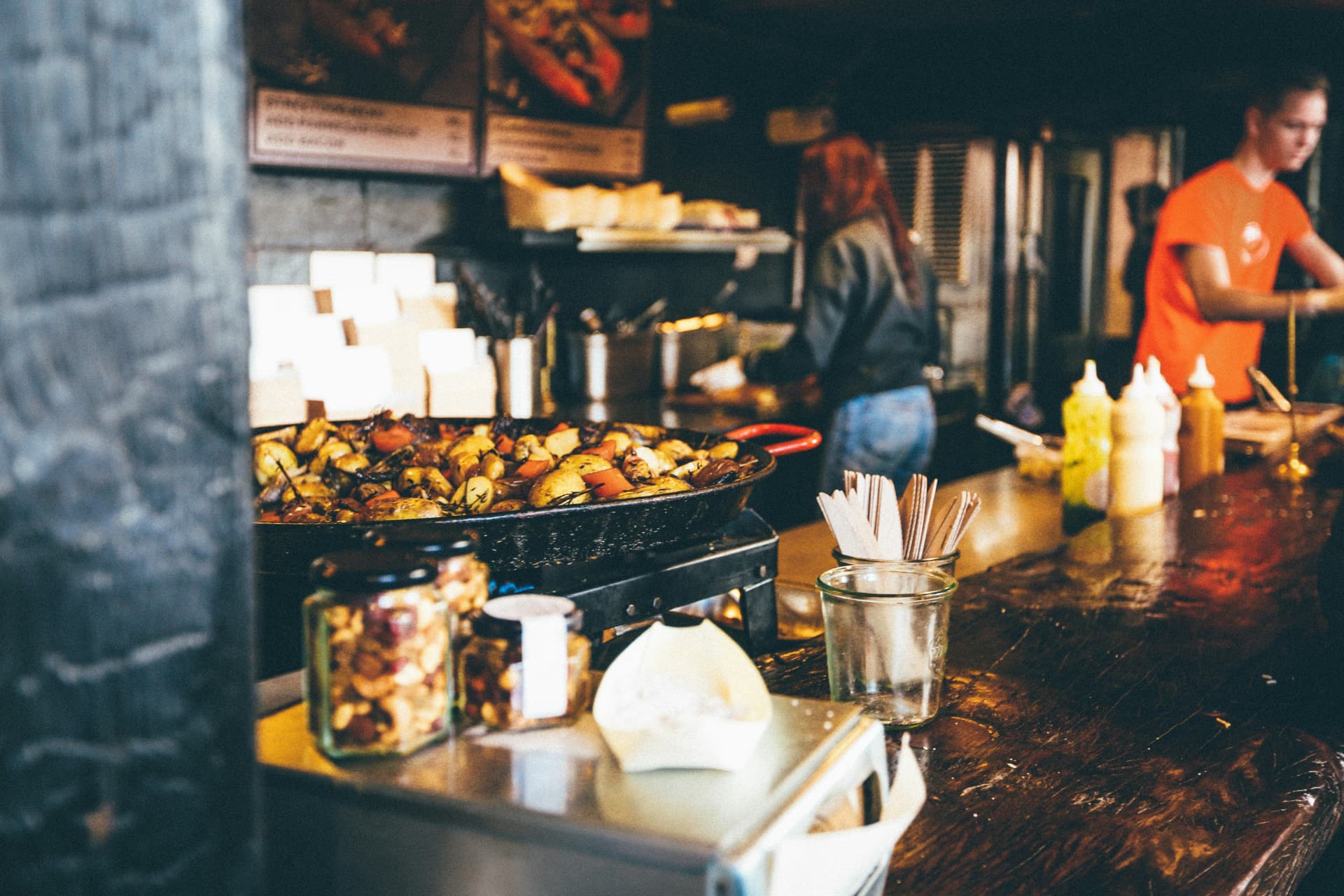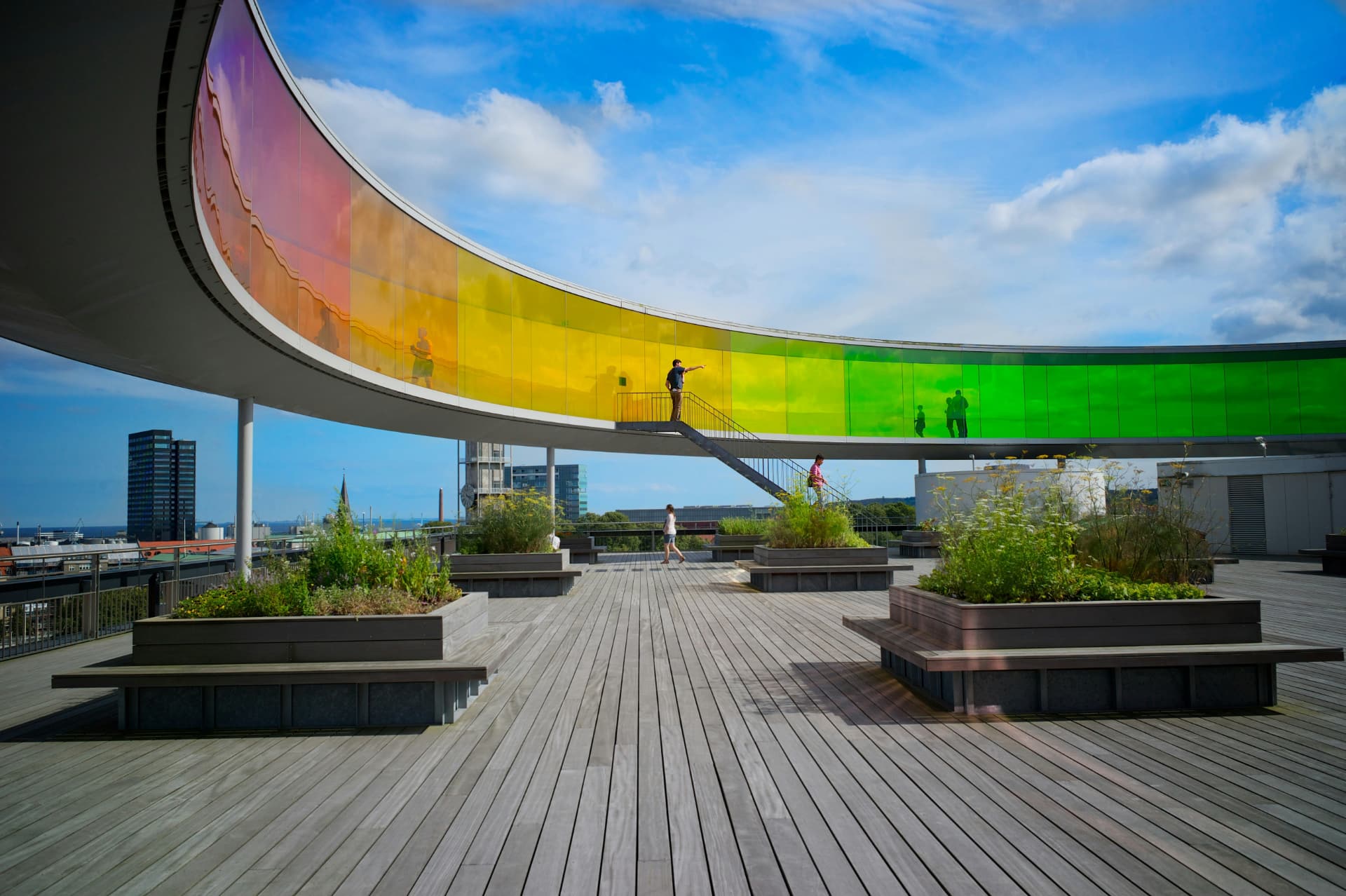When thinking about Danish food, the first thing that often comes to mind is the deliciously flaky Danish pastry. Known as wienerbrød in Denmark, these pastries have gained worldwide fame, often overshadowing the country’s rich culinary traditions that offer much more complexity and variety. However, Denmark’s gastronomic scene extends far beyond these sweet treats, encompassing a wide range of flavors that are deeply rooted in history, innovation, and local ingredients.
In this exploration of Danish cuisine, we will dive into the traditional dishes that have been staples at Danish tables for centuries, discover the revolutionary New Nordic Cuisine that has put Denmark on the global culinary map, and take a tour of Copenhagen’s prestigious Michelin-starred restaurants. From hearty meals that warm the soul to avant-garde dishes that dazzle the senses, Danish cuisine offers a remarkable array of experiences that beckon food lovers to explore its depths.
Join us as we journey through Denmark’s culinary landscape, uncovering the tastes and traditions that make Danish dining truly unique. Whether you are a gourmet aficionado or a curious traveler, this guide will introduce you to flavors you never knew existed and rekindle your appreciation for those you thought you knew.

The Roots of Danish Culinary Traditions
Danish cuisine is steeped in a rich history that reflects the agricultural lifestyle and maritime heritage of the nation. Traditional Danish dishes often emphasize hearty, simple ingredients that can withstand the harsh Nordic winters, making use of local produce, meats, and seafood.
Traditional Danish Dishes
- Smørrebrød: Perhaps one of the most iconic Danish dishes, Smørrebrød consists of buttered rye bread (rugbrød) topped with a variety of ingredients such as herring, roast beef, pickled vegetables, or liver pâté. This open-faced sandwich is a staple for lunch and showcases the Danish flair for combining flavors and textures.
- Frikadeller: These pan-fried meatballs made from ground pork, onions, eggs, and milk are a beloved traditional dish in Denmark. Often served with potatoes and pickled beetroot or red cabbage, Frikadeller is a comforting meal that embodies the homeliness of Danish cuisine.
- Stegt flæsk: Voted as Denmark’s national dish in a 2014 poll, Stegt flæsk is crispy pork belly served with potatoes and a creamy parsley sauce. It’s a simple yet satisfying dish that highlights the Danish love for pork.
Seasonal and Regional Variations
Danish cuisine varies significantly with the seasons, utilizing what is locally available. During the long winters, preserved foods play a crucial role, while the summer months bring a bounty of fresh produce. Each region of Denmark also has its own specialties, often based on local agricultural or fishing practices.
- Jutland: Known for its robust and hearty meat-based dishes.
- Zealand: Offers a variety of fish dishes due to its proximity to the sea.
- Bornholm: Famous for its smoked herring.
Cultural Significance
These dishes are more than just food; they are a part of Denmark’s cultural identity. Traditional cooking methods and recipes are passed down through generations and are a point of pride at Danish tables. The simplicity of the cuisine reflects the Danish value of “hygge,” or coziness, making meals a time for warmth and camaraderie.

The Rise of New Nordic Cuisine
The New Nordic Cuisine movement has been a revolutionary force in the culinary world, fundamentally reshaping how people think about food in Denmark and beyond. Initiated in the early 2000s by chefs and food activists, including René Redzepi of Noma, the movement seeks to elevate Nordic food to global prominence by focusing on purity, simplicity, and freshness.
Principles of New Nordic Cuisine
- Sustainability: Central to New Nordic Cuisine is the commitment to sustainability. The movement emphasizes using ingredients that are characteristic of the region, seasonally produced, and environmentally friendly.
- Seasonality: Dishes are designed around what is available during specific times of the year, ensuring that ingredients are at their peak freshness and flavor. This approach not only highlights the diversity of the region’s produce but also encourages a deeper connection with the local environment.
- Innovation: New Nordic Cuisine is also about reinterpreting traditional dishes through innovative cooking techniques and presentations, thus creating a new appreciation for Nordic culinary traditions.
Impact on Global Culinary Arts
- René Redzepi and Noma: Perhaps the most well-known figure in the New Nordic movement, René Redzepi’s restaurant Noma has been awarded the title of the world’s best restaurant several times. Noma’s approach to foraging, fermenting, and farmer collaboration has influenced chefs worldwide, leading to a broader interest in and respect for Nordic culinary techniques and philosophies.
- Global Influence: The principles of New Nordic Cuisine have inspired chefs around the world to take a similar approach in their kitchens—focusing on local ingredients, sustainability, and innovative methods.

New Nordic in Everyday Dining
While high-end restaurants like Noma have played a crucial role in bringing international attention to New Nordic Cuisine, the principles of the movement are evident in more accessible dining establishments across Denmark. From casual bistros to food halls, chefs are embracing local ingredients and sustainable practices, making New Nordic Cuisine a part of everyday dining experiences.
Educational and Culinary Institutions
- Culinary Schools and Public Education: In Denmark, culinary schools and public food education programs incorporate New Nordic principles, ensuring that the next generation of chefs and home cooks are well-versed in these methods and philosophies.
- Publications and Media: Several cookbooks and television shows have also played a significant role in popularizing New Nordic Cuisine, making it more accessible to the general public both in and outside of Denmark.

A Tour of Copenhagen’s Michelin Stars
Copenhagen has emerged as a global culinary powerhouse, partly due to its impressive collection of Michelin-starred restaurants that epitomize the height of Danish and New Nordic cuisine. These establishments are not just places to eat; they are venues where food is transformed into an art form and dining becomes an experiential journey.
Overview of Copenhagen’s Michelin-Starred Dining Scene
Copenhagen’s Michelin-starred restaurants are renowned for their innovation, quality, and the extraordinary culinary experiences they offer. The city’s dining scene includes a range of restaurants that have been awarded one, two, or even three Michelin stars, each providing unique interpretations of Danish and international cuisine.
Highlighted Restaurants
- Geranium: The first Danish restaurant to receive three Michelin stars, Geranium is led by chef Rasmus Kofoed. It focuses on light, dynamic, and aesthetically pleasing dishes that are deeply connected to the Scandinavian landscape. The menu features ingredients that are often foraged and always seasonal, promoting a symbiosis with nature.
- Visit Geranium
- AOC: A recipient of two Michelin stars, AOC aims to provide a sensory dining experience that reflects the taste and aesthetic of Denmark. The restaurant uses aromas, tastes, and textures from the Danish “terroir” to create dishes that are visually stunning and gastronomically delightful.
- More about AOC can be found here.
- Relæ: Known for its commitment to sustainability, Relæ has a Michelin star and is one of the world’s most recognized sustainable restaurants. Relæ delivers sophisticated and thoughtful dishes with minimal environmental impact, embodying the essence of the New Nordic Cuisine movement.
- Discover Relæ at Relæ.
Dining Experience and Philosophy
Each of these restaurants shares a commitment to excellence, sustainability, and innovation, but they also strive to provide an intimate and memorable dining experience. They place a strong emphasis on the origin of their ingredients, often showcasing the local producers and the story behind each component that makes up the dishes served.
The Impact on Copenhagen’s Culinary Reputation
The constellation of Michelin stars in Copenhagen has not only elevated the city’s status on the global culinary map but has also inspired a broader appreciation for Danish food traditions and the New Nordic Cuisine. The acclaim garnered by these restaurants has attracted food enthusiasts from around the world, eager to experience the pinnacle of culinary craftsmanship offered in Denmark’s capital.

Voices from the Kitchen: Insights from Danish Chefs
The success of Copenhagen’s culinary scene is deeply rooted in the innovation and passion of its chefs. In this section, we delve into interviews with some of the leading Danish chefs who are redefining the nation’s cuisine. Through their insights, we gain a deeper understanding of their culinary philosophy, inspirations, and the challenges they face in the high-stakes world of fine dining.
Interview Highlights
- Chef Rasmus Kofoed of Geranium: Known for his precision and innovation, Kofoed discusses how his experiences in international culinary competitions have shaped his approach at Geranium. He emphasizes sustainability and creativity, explaining how each dish is designed to tell a story about the Danish landscape and culture.
- Chef Christian Puglisi of Relæ: Puglisi shares his journey from apprentice to Michelin-starred chef and his commitment to sustainability. He talks about the importance of organic produce and how Relæ’s menu is designed around the availability of local, sustainable ingredients.
- Chef Søren Selin of AOC: Selin describes his approach to creating sensory experiences that connect diners with Danish heritage through taste and texture. He highlights the role of local ingredients and traditional techniques in achieving a balance between innovation and respect for Danish culinary traditions.
Culinary Philosophy and Practices
Each chef brings a unique perspective to the table, yet common themes emerge:
- Focus on Local Sourcing: There’s a strong emphasis on using locally sourced and seasonal ingredients to reduce carbon footprints and support local farmers and producers.
- Innovation within Tradition: While deeply respectful of Danish culinary traditions, these chefs are not afraid to reinterpret them in new and exciting ways.
- Sustainability as a Core Principle: Sustainability isn’t just a trend but a foundational element of their culinary practices, influencing everything from menu design to restaurant operations.
Restaurant Reviews
To complement the chefs’ insights, this section also includes reviews of their restaurants, providing readers with a sense of what to expect when visiting:
- Geranium Review: A detailed description of the dining experience, from the ambiance and service to the standout dishes and wine pairings.
- Relæ Review: An exploration of Relæ’s minimalist approach to fine dining, focusing on how the restaurant’s ethos is reflected in its menu and overall dining experience.
- AOC Review: A review that captures the sensory delights of dining at AOC, with particular attention to how the restaurant’s setting enhances the enjoyment of its culinary creations.
These interviews and reviews not only provide a glimpse into the minds of Copenhagen’s top chefs but also offer practical insights for readers who may be planning a visit or simply dreaming of a culinary pilgrimage to Denmark.

Bringing Danish Flavors Home: Cooking Traditional Danish Recipes
Danish cuisine, with its emphasis on simplicity, quality, and seasonal ingredients, is not only a delight to experience in restaurants but also accessible for cooking at home. This section provides readers with easy-to-follow recipes and tips on how to bring the essence of Danish kitchens into their own, allowing everyone to savor a taste of Denmark no matter where they are.
Classic Danish Recipes
- Smørrebrød (Open-Faced Sandwich): Start with a detailed recipe for preparing the famous Danish smørrebrød. This includes how to bake the dense, dark rye bread that forms its base and suggestions for a variety of traditional toppings like cured herring, roast beef, remoulade, and pickles.
- Frikadeller (Danish Meatballs): Provide a step-by-step guide to making frikadeller. These savory meatballs are a staple in Danish cuisine and can be served with potatoes, creamy gravy, and red cabbage for a comforting meal.
- Stegt Flæsk (Crispy Pork with Parsley Sauce): Teach readers how to cook this beloved dish, voted Denmark’s national dish. It features crispy pork belly strips served with boiled potatoes and a creamy parsley sauce.
Ingredients and Substitutions
Offer advice on sourcing authentic Danish ingredients or suggest readily available alternatives to ensure the recipes are accessible to a global audience. For example, if Danish blue cheese isn’t available, recommend another type of blue cheese that can capture a similar flavor profile.
Cooking Tips and Techniques
- Danish Baking Techniques: Share some tips and techniques specific to Danish baking, such as the slow fermentation process for making rugbrød (rye bread) which is integral to Danish cuisine.
- Presentation and Serving Suggestions: Danish cuisine is also about presentation. Provide tips on how to artfully arrange smørrebrød and serve traditional dishes in a way that honors their cultural significance.
Inviting Reader Participation
- Interactive Element: Encourage readers to share their own experiences with Danish cuisine or any modifications they’ve made to adapt these recipes to local tastes and ingredients. This can be facilitated through comments on the blog or social media posts, fostering a community of culinary exchange.
Recreating Danish dishes at home is a wonderful way to connect with Denmark’s rich culinary heritage. Whether you’re crafting a delicate smørrebrød or a hearty plate of frikadeller, each recipe offers a window into the flavors and traditions of Danish cuisine. We hope these recipes inspire you to explore new culinary techniques, experiment with unique ingredients, and bring a touch of Danish coziness into your own kitchen.

Embracing the Rich Tapestry of Danish Cuisine
As we conclude our exploration of Danish cuisine, it’s clear that the culinary landscape of Denmark offers much more than the renowned pastries that have captivated global taste buds. From the hearty simplicity of traditional dishes to the innovative spirit of New Nordic cuisine, Danish food culture represents a profound commitment to quality, sustainability, and gastronomic excellence.
The journey through Denmark’s historic dishes, the revolutionary approaches of its top chefs, and the culinary masterpieces served in Copenhagen’s Michelin-starred restaurants highlight a food scene that is vibrant and deeply rooted in the country’s cultural heritage. Each recipe and restaurant visit tells a story of a nation that prides itself on its culinary heritage and its forward-thinking adaptation to contemporary tastes and environmental concerns.
For those inspired to delve deeper into Danish cuisine, whether through dining out or cooking at home, the journey is as much about discovering new flavors as it is about connecting with the values that make Danish food uniquely compelling. Sustainability, a deep connection to nature, and an emphasis on community and comfort are all hallmarks of the Danish dining experience.
We invite you to step beyond the pages of this guide and into the world of Danish cuisine to taste, experiment, and enjoy. Whether you’re spreading liver pâté on a slice of dense rye bread, shaping your own frikadeller, or sitting down to a meal in a Copenhagen eatery that challenges your perceptions of flavor, you’re participating in a culinary tradition that is rich, diverse, and wonderfully satisfying.
Embrace the Danish way of eating and living, where every meal is an opportunity to gather, share, and create memories. Danish cuisine is a celebration of life’s simple pleasures, and we hope this exploration inspires you to bring a piece of Denmark into your kitchen and perhaps, one day, experience its culinary delights firsthand in the heart of Denmark.





0 Comments